Contents
- Fundamentals of Kitchen Design: Balancing Form, Function, and Style 🏡🍳
- Planning and Layout Strategies: Designing a Kitchen That Works for You 🍽️📏
- Choosing Kitchen Furniture and Fixtures: Maximizing Functionality and Style 🏡🍽️
- Lighting and Ambiance: Transforming Your Kitchen’s Functionality and Mood 💡✨
- Professional Kitchen Renovation: Creating a Space That Works for You 🏡🔨
- Choosing Porcelain Tile and Quality Materials: A Smart Investment for Your Kitchen 🏡🔑
- Innovative Storage and Appliances: Maximizing Function and Style in Your Kitchen 🏡🔧
Transforming your kitchen from a purely functional space into the heart of your home requires a careful balance of design and practicality. Whether you’re planning a full renovation or simply refreshing your current kitchen, mastering the principles of kitchen interior design is essential. By blending style with efficiency, you can create a space that not only looks stunning but works seamlessly for your everyday needs.
The most successful kitchen designs strike a perfect balance between visual appeal and functionality, ensuring that every element serves a clear purpose. When designing your kitchen, think about the atmosphere you want to create while making sure the space is equipped to handle your cooking, storage, and entertaining needs.
Your kitchen’s layout is key—it forms the foundation for both workflow and comfort. Before making any design decisions, take a moment to evaluate how you use the kitchen on a daily basis. The layout will determine how easily you move through the space and how efficiently you work.
From countertops to cabinet finishes, every material choice you make influences both the look and longevity of your kitchen. These decisions will not only define the overall aesthetic but also impact the durability and maintenance of the space, ensuring it stands the test of time while remaining functional for years to come. 🛠️✨
Fundamentals of Kitchen Design: Balancing Form, Function, and Style 🏡🍳
The key to successful kitchen design is achieving a balance between aesthetic appeal and functionality. By combining current trends with timeless principles, you can create a kitchen that not only looks beautiful but works effortlessly. The best kitchens integrate design elements that enhance both the visual and practical aspects, ensuring that your space is both stylish and highly functional.
Understanding Aesthetics and Functionality: Creating a Harmonious Space 🎨🔧
Aesthetics are the visual elements that define your kitchen’s atmosphere. From the color palette to the material finishes, every choice contributes to the look and feel of your space. Key aesthetic considerations include:
- Color Palette: Typically, 2-3 main colors that complement each other to create a cohesive look.
- Material Finishes: The right finishes for your countertops, cabinets, and backsplashes can elevate the design and create a polished, coordinated look.
- Lighting Design: Proper lighting—ambient, task, and accent—helps set the mood while providing the necessary illumination for cooking and entertaining.
However, functionality is just as important. Your kitchen must serve your daily needs, supporting the way you work and move around the space.
- The Classic Work Triangle: The layout should connect the refrigerator, stove, and sink in a way that makes cooking as efficient as possible.
- Traffic Flow: Allow 36-42 inches for walkways and at least 48 inches for work aisles to accommodate multiple people cooking together.
- Storage Solutions: Design storage based on your cooking habits. Ensure the most frequently used items are easy to reach and organized for convenience.
Components of a Modern Kitchen: Blending Convenience with Contemporary Style 💡🍴
Modern kitchens incorporate essential components that combine convenience with cutting-edge style. Here are the key elements that define a contemporary kitchen:
- High-Efficiency Appliances: Choose appliances that save energy and time without compromising performance, from refrigerators to stoves and dishwashers.
- Durable, Low-Maintenance Countertops: Opt for materials like quartz or granite that are easy to clean and resistant to wear and tear.
- Task-Specific Lighting: Incorporate lighting that highlights key areas for food prep, cooking, and dining.
- Integrated Technology: Smart appliances, USB charging stations, and tablet stands can make your kitchen more functional and user-friendly.
- Sustainable Materials: Incorporate eco-friendly choices such as recycled countertops, energy-efficient lighting, and low-VOC paints.
An island has become a central feature in modern kitchens, offering additional workspace, extra storage, and often informal seating. Consider a multi-level island to separate prep areas from dining spaces, adding versatility to your layout.
Technological integration is an essential aspect of modern kitchens. Consider incorporating smart appliances that can be controlled remotely or add features like USB outlets and tablet stands for convenience.
Finally, don’t forget the importance of ventilation. Modern range hoods serve as both functional and stylish statement pieces while efficiently removing odors and moisture from your kitchen.
Planning and Layout Strategies: Designing a Kitchen That Works for You 🍽️📏
A well-designed kitchen is the perfect balance between aesthetic appeal and functionality. The right layout not only boosts workflow efficiency but also enhances your overall enjoyment of the space. Whether you’re renovating or planning a new kitchen, layout decisions are critical to creating a space that’s both beautiful and practical.
Effective Kitchen Layouts: Selecting the Right Design 🏡
The first step in creating your dream kitchen is choosing the layout pattern that works best for your space and needs. Common configurations include:
- Galley: Ideal for narrow spaces, with two parallel countertops.
- L-shaped: A versatile layout that works well for both small and large kitchens.
- U-shaped: Perfect for larger kitchens, providing ample counter space and storage.
- G-shaped: A variation of the U-shape with an added peninsula for extra workspace.
When choosing your layout, the work triangle concept is essential. This design principle connects your refrigerator, sink, and stove in an efficient triangle, ensuring a smooth cooking workflow. Ideally, the total perimeter of the work triangle should range from 12 to 26 feet for maximum efficiency.
Key layout considerations:
- Counter Space: Always allocate sufficient counter space near your major appliances. A minimum of 36 inches of preparation area adjacent to the sink and 15 inches on either side of the cooktop is recommended.
- Traffic Flow: Walkways should be at least 36 inches wide, with 42-48 inches for kitchens that accommodate multiple cooks. This prevents congestion and ensures safe movement during meal preparation.
Incorporating Kitchen Islands: The Multifunctional Hub 🍳🍴
A kitchen island serves as a multifunctional centerpiece, offering additional workspace, storage, and seating options. Before installing one, ensure there is at least 42 inches of clearance on all sides to allow for comfortable movement.
Possible island functionalities:
- Prep Station: Include a sink for washing or food prep.
- Cooking Surface: Add a range or cooktop for increased cooking space.
- Casual Dining Area: Integrate seating for informal meals or entertaining.
- Storage Solution: Incorporate cabinets or drawers to keep your kitchen organized.
- Appliance Housing: Use the island to house small appliances like dishwashers or wine fridges.
For smaller kitchens, a minimum island size of 2 feet by 4 feet will work well. Larger kitchens can accommodate islands up to 3 by 6 feet or more.
Electrical outlets are essential for your island design. Discreetly integrate outlets for charging devices or small appliances without disrupting the aesthetic of your kitchen.
Optimizing Natural Light and Open Spaces 🌞🏡
Natural light is a powerful tool that can completely transform the atmosphere of your kitchen. It not only makes the space feel larger but also helps reduce energy costs. To maximize natural light:
- Position your primary work areas near windows whenever possible to take full advantage of daylight.
- If structural changes are feasible, consider removing non-load-bearing walls to create an open-concept kitchen, enhancing light flow and promoting social interaction while cooking.
Window treatments should strike a balance between privacy and light flow. Light-filtering blinds or translucent curtains are ideal for diffusing harsh sunlight while still allowing light to enter.
Mirrors can also help amplify existing natural light. Place mirrors opposite windows to reflect daylight deeper into your kitchen space.
For the evening hours, consider layered lighting to create depth and ambiance:
- Ambient Lighting: Use ceiling fixtures to provide general illumination.
- Task Lighting: Install under-cabinet lighting to brighten work areas.
- Accent Lighting: Highlight architectural features or decorative elements to create visual interest.
This multi-layered approach ensures that your kitchen is well-lit for all activities, from cooking to entertaining. 🌟
Choosing Kitchen Furniture and Fixtures: Maximizing Functionality and Style 🏡🍽️
The furniture and fixtures you choose for your kitchen not only define its overall aesthetic but also determine how functional and enjoyable your space will be. Thoughtful selections can enhance your cooking experience, while durable pieces ensure your kitchen will stand the test of time.
Selecting Durable Countertops: Beauty and Practicality Combined 🪵🔨
When it comes to countertops, the right choice can make or break your kitchen’s aesthetic and functionality. Here are some popular options to consider:
- Granite: Known for its exceptional durability and heat resistance, granite is a popular choice. However, it requires periodic sealing to prevent staining, making it ideal for homeowners who don’t mind a bit of maintenance.
- Quartz: If you prefer something more low-maintenance, quartz offers the same durability as granite without the need for sealing. It’s non-porous, resists bacteria, and comes in consistent patterns that add a sleek, modern look to your kitchen.
- Butcher Block: For those looking for a warm, natural look, butcher block countertops add character but require regular oiling to maintain their appearance. They may show knife marks over time, so they’re best suited for light use or aesthetic purposes.
- Modern Laminates: For budget-conscious renovations, modern laminates can mimic the look of high-end materials like stone and wood, offering a cost-effective alternative with a wide variety of styles.
When selecting your countertop material, keep these factors in mind:
- Durability: How well the surface withstands daily use.
- Maintenance Requirements: How much upkeep is needed.
- Cost: Consider both the initial investment and the long-term value.
- Visual Appeal: Ensure it complements your cabinetry and backsplash for a cohesive design.
The Role of Open Shelves and Pull-Out Drawers: Storage That Works for You 📦🔧
Open Shelves can transform your kitchen into a visually appealing space. They turn storage into a display area for your most-used items, like everyday dishes and glassware, while making them easily accessible. Keep it simple with 2-3 shelves to avoid clutter.
Pull-out Drawers maximize your kitchen’s storage functionality. Deep drawers are great for storing pots and pans, while shallow drawers help you organize utensils and gadgets. Specialized storage solutions can make a big difference:
- Spice drawer inserts
- Vertical dividers for baking sheets
- Pot lid organizers
- Pull-out trash and recycling centers
For added convenience, soft-close mechanisms prevent slamming and extend the lifespan of your hardware. When selecting drawers, make sure the handles complement your overall design theme and offer a comfortable grip.
Integrating Stainless Steel Appliances: Timeless and Efficient 🧑🍳💡
Stainless steel appliances are the cornerstone of modern kitchens, offering both professional-grade performance and timeless appeal. Their neutral, metallic finish coordinates well with virtually any kitchen color scheme and is more resistant to fingerprints than previous models.
When choosing appliances, consider the following:
- Proportional Sizing: The refrigerator should complement the surrounding cabinetry, and the range hood should extend slightly beyond the cooktop for proper ventilation.
- Panel-Ready Appliances: For a more seamless look, consider panel-ready options. These allow you to attach custom cabinetry panels to your appliances, making them blend into the kitchen’s design.
Don’t forget about energy efficiency! Look for ENERGY STAR certified models that help reduce utility costs while minimizing your environmental impact.
Appliance placement is key to maximizing kitchen workflow. Position your refrigerator, sink, and stove in a triangular arrangement with 4-9 feet between each point to ensure smooth movement and efficient meal prep.
Lighting and Ambiance: Transforming Your Kitchen’s Functionality and Mood 💡✨
Effective kitchen lighting is essential for creating both a functional and welcoming environment. Proper illumination, paired with thoughtful ambiance elements, can make even routine kitchen activities more enjoyable and enhance the overall atmosphere of your space.
Creating a Well-Lit Kitchen: Layered Lighting for Every Need 🌟
The key to a well-lit kitchen is using three primary types of lighting: task lighting, ambient lighting, and accent lighting. Each type plays a crucial role in enhancing both functionality and mood.
- Task Lighting:
Focused lighting for work areas where food is prepared, cooked, and cleaned. This ensures that your kitchen tasks are done safely without shadows. Popular options include under-cabinet LEDs, pendant lights over islands, and recessed fixtures above countertops. - Ambient Lighting:
This is your base layer of light. Ceiling fixtures, recessed lights, or wall sconces provide overall illumination, creating an evenly lit space without harsh shadows. This type of lighting ensures your kitchen feels warm and inviting. - Accent Lighting:
Add visual interest to your kitchen by highlighting key features. Use toe-kick lighting, interior cabinet lights, or spotlights on artwork or decorative elements to create a dynamic, layered effect.
Dimmable Fixtures: For ultimate flexibility, install dimmable lights to adjust the ambiance throughout the day. In the morning, you might need bright, energizing light to kickstart your day, while evening meals or gatherings will benefit from softer, more intimate lighting.
Designing for a Coherent Ambiance: Lighting That Sets the Mood 🌈🖤
The ambiance of your kitchen is shaped by a combination of light quality, color temperature, and material reflectivity. Here’s how each element contributes to the overall feel of the space:
- Color Temperature: The color temperature of your lighting plays a huge role in setting the mood of your kitchen. For task areas, cooler lights (4000K+) promote alertness and visibility, making them ideal for prepping meals. In dining or casual areas, warmer tones (2700-3000K) create a cozy, inviting atmosphere.
- Material Reflectivity: The materials you choose for surfaces can affect how light interacts with your kitchen. Glossy surfaces reflect more light, brightening the room and making it feel more open. On the other hand, matte finishes absorb light, creating a softer and more intimate feel.
- Natural Light: Maximize natural light in your kitchen by positioning key work areas near windows. Consider window treatments that allow plenty of daylight to filter in while minimizing glare, creating an environment that’s both bright and comfortable.
Smart Lighting Systems: The Future of Kitchen Illumination 🧠💡
Smart lighting systems allow you to program different lighting scenes for various activities. With a simple touch, you can switch between preset lighting combinations designed for cooking, cleaning, dining, and entertaining, giving you ultimate control over the mood and functionality of your kitchen.
With the right balance of task, ambient, and accent lighting, you can create a kitchen that is as practical as it is beautiful. Thoughtful lighting choices not only enhance your workflow but also set the tone for every moment spent in the heart of your home. 🌟
Professional Kitchen Renovation: Creating a Space That Works for You 🏡🔨
Transforming your kitchen requires a blend of careful planning, professional expertise, and high-quality materials to achieve a space that’s both functional and visually appealing. A professional renovation can not only elevate your kitchen’s aesthetics but also significantly increase your home’s value, making it an investment that perfectly suits your lifestyle needs.
Working with a Kitchen Designer: Expertise for a Seamless Renovation 💡🎨
A kitchen designer brings technical knowledge and creative vision to your renovation, ensuring every detail is well thought out. From space constraints to layout design, a professional designer can help you optimize your kitchen for efficiency and style.
Here’s how a kitchen designer adds value to your project:
- Space Planning: Designers assess your space and translate your needs into practical layouts that maximize both storage and workflow.
- 3D Renderings: Many designers create detailed 3D renderings, allowing you to visualize the finished space before the renovation begins, so you can make adjustments and ensure satisfaction.
- Up-to-Date Knowledge: Professional designers are always in tune with the latest trends and technologies in kitchen design, offering you advice on materials, color schemes, and lighting that complement your home’s unique architecture.
- Project Management: From coordinating with contractors to managing timelines and budgets, a designer takes the stress out of the process, ensuring everything runs smoothly.
- Budget Management: Designers help you stay within budget by suggesting cost-effective alternatives if certain materials or elements exceed your price range.
Custom Solutions: Modular and Peninsula Kitchens for Flexibility 🛠️🏠
When it comes to designing your kitchen, custom solutions provide the flexibility to create the perfect space. Two popular options are modular kitchens and peninsula kitchens, both of which offer distinct advantages for your renovation:
- Modular Kitchens:
Modular kitchens are pre-manufactured units that come in standard sizes but can be arranged in numerous configurations to fit your space perfectly. The benefits include:- Quick Installation: Modular units are typically 30-40% faster to install than custom builds, helping you complete your renovation in less time.
- Cost Efficiency: Since these units are mass-produced, they are more affordable, reducing your overall renovation expenses.
- Flexibility: Modular units can be easily rearranged or modified if your needs change in the future, offering lasting flexibility.
- Peninsula Kitchens:
A peninsula kitchen features an extended countertop that projects from a wall or cabinet, creating additional workspace and casual seating. This design is perfect for open floor plans, where you may want partial separation between the cooking and living areas. Some benefits of a peninsula layout include:- Extra Workspace: Provides more counter space for food prep or small appliances.
- Casual Dining: The extension can be used for seating, making it ideal for family gatherings or informal meals.
Hybrid Renovation Approach: Combining Modular and Peninsula Kitchens 🔄
For the best of both worlds, consider combining modular components with a peninsula layout. This hybrid approach allows you to maximize space and functionality while still enjoying the customization of a professional renovation. It often delivers the perfect balance of value and personalization, providing a tailored kitchen that suits your unique needs and design preferences.
Choosing Porcelain Tile and Quality Materials: A Smart Investment for Your Kitchen 🏡🔑
When it comes to kitchen renovations, choosing the right materials is key to achieving both style and functionality. Porcelain tile is one of the most durable flooring options, offering unmatched resistance to moisture, stains, and wear. Fired at higher temperatures than ceramic tiles, porcelain is denser and less porous, making it an excellent choice for high-traffic, moisture-prone areas like kitchens.
Thanks to modern manufacturing techniques, porcelain tiles can now convincingly mimic the look of natural stone or wood, allowing you to enjoy the aesthetic appeal of these materials without the maintenance concerns.
Selecting Countertops: Durability, Maintenance, and Cost 💎🛠️
Your kitchen countertops are one of the most important design and functionality choices. When selecting a material, consider a balance between aesthetics, durability, and maintenance requirements. Here’s a quick comparison of popular options:
| Material | Durability | Maintenance | Cost Range |
|---|---|---|---|
| Quartz | Very High | Low | $$$-$$$$ |
| Granite | High | Medium | $$-$$$$ |
| Solid Surface | Medium | Low | $$-$$$ |
- Quartz offers exceptional durability and is non-porous, requiring little maintenance. It’s a premium choice with a higher price range but offers long-term value.
- Granite is another durable option, although it requires periodic sealing to maintain its appearance. It’s a great middle ground in terms of cost and durability.
- Solid Surface materials are easy to clean and maintain but may not be as scratch-resistant or heat-resistant as quartz or granite. These options are perfect for budget-conscious renovations.
Investing in Quality Cabinetry: Longevity and Functionality 🛠️🚪
Cabinetry often accounts for about 30% of a kitchen renovation budget. To ensure your kitchen stands the test of time, choose high-quality materials and construction methods. Look for cabinets with:
- Solid wood doors and drawer fronts, which provide durability and a luxurious feel.
- Dovetail joints for drawers, which ensure strong, long-lasting construction.
- Soft-close hinges and full-extension drawer glides to enhance the functionality and longevity of your cabinets, preventing wear and tear over time.
Although premium materials often come with a higher initial cost, they can prove to be a more economical choice in the long run. High-quality materials require less maintenance and replacement, ultimately saving you time and money over the years.
Innovative Storage and Appliances: Maximizing Function and Style in Your Kitchen 🏡🔧
Smart storage solutions and innovative appliances are transforming modern kitchens into functional masterpieces. With the right organization and cutting-edge tech, you can eliminate clutter and create a space that’s both aesthetically pleasing and highly efficient.
Transformative Kitchen Storage Solutions 🗄️✨
Efficient storage is crucial for maintaining a clean, organized kitchen. Here are some clever storage solutions to help you maximize every inch of space:
- Pull-out Pantries: These maximize vertical space, keeping ingredients organized and accessible without taking up additional floor space.
- Drawer Dividers and Custom Inserts: Ensure that every utensil, knife, or gadget has a designated spot, making it easy to find what you need without rummaging through drawers.
- Corner Cabinets with Rotating Carousel Systems: Eliminate the frustration of reaching into deep, dark corners. These systems make use of every inch, allowing easy access to stored items.
- Toe-Kick Drawers: Utilize the wasted space beneath cabinets by installing toe-kick drawers to store seldom-used items or small kitchen gadgets.
- Appliance Garages: Keep your countertops clear by hiding daily-use appliances in convenient pull-down or lift-up compartments. Many of these garages can also be customized with electrical outlets, providing a place to charge devices or plug in small appliances without cluttering your workspace.
Hidden Storage and Seamless Design: Revolutionizing Kitchen Aesthetics 🎨🔒
Hidden storage has become an integral part of modern kitchen design. These discreet storage solutions blend seamlessly into the design, offering clean lines and a sleek aesthetic while keeping your kitchen organized. Some smart options include:
- Panel-Ready Appliances: Appliances that can be fitted with custom panels to match your cabinetry, creating a cohesive, unified look.
- Under-Cabinet Lighting with Integrated USB Ports: Task lighting that not only illuminates your workspace but also offers convenient USB charging ports for your devices.
- Motorized Cabinet Doors: Push-to-open systems that make accessing your kitchen storage effortless, adding a touch of luxury and convenience to your space.
Modern Appliances: Form Meets Function with Cutting-Edge Technology 🧑🍳🔌
Today’s kitchen appliances combine form and function with advanced technological features that make cooking easier and more efficient:
- Refrigerators with Transparent Screens: View the contents of your fridge without opening the door, saving energy and making it easier to find what you need.
- Induction Cooktops: These provide precise temperature control and a sleek, minimalist profile. Many modern induction cooktops even feature integrated ventilation systems, removing the need for bulky overhead hoods.
- Smart Ovens: With remote programming capabilities, these ovens allow you to start cooking dinner while you’re still at work. Control temperature and cooking time directly from your smartphone, ensuring your meal is ready when you arrive home.
- Compact Appliances: Smaller appliances that deliver powerful functionality in a space-saving footprint. Multi-functional devices like pressure cooker/air fryer combinations reduce countertop clutter while expanding your cooking options.
By incorporating innovative storage solutions and smart appliances, you can transform your kitchen into a highly efficient, aesthetically pleasing space that works for your needs. These solutions not only improve functionality but also enhance the overall atmosphere of your kitchen, making it a place where cooking and organizing are a joy. 🌟

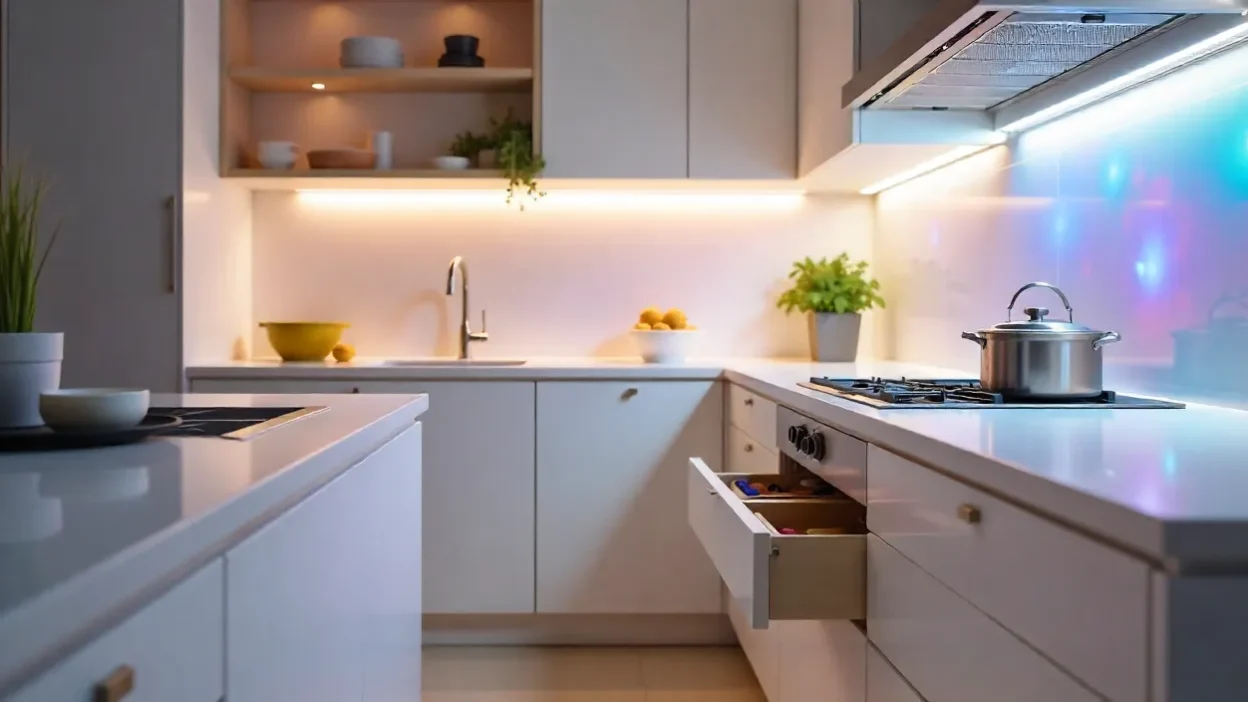
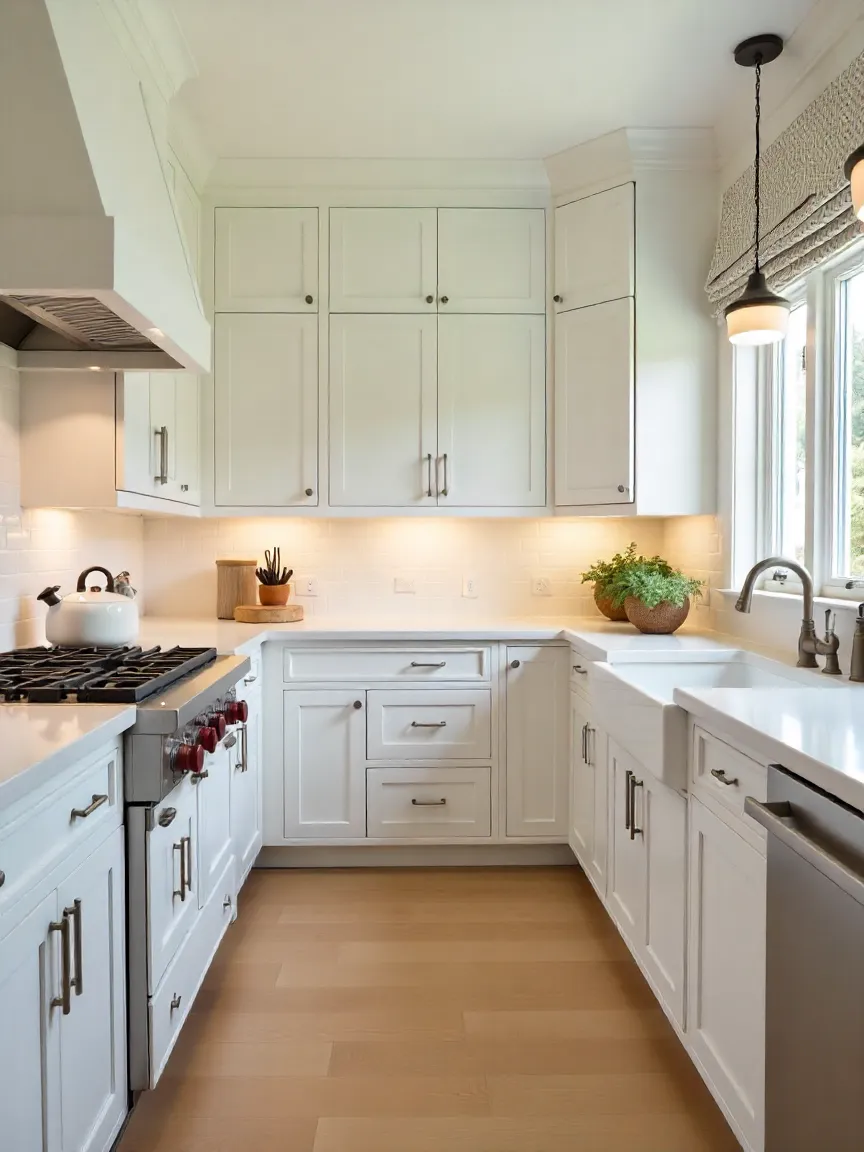

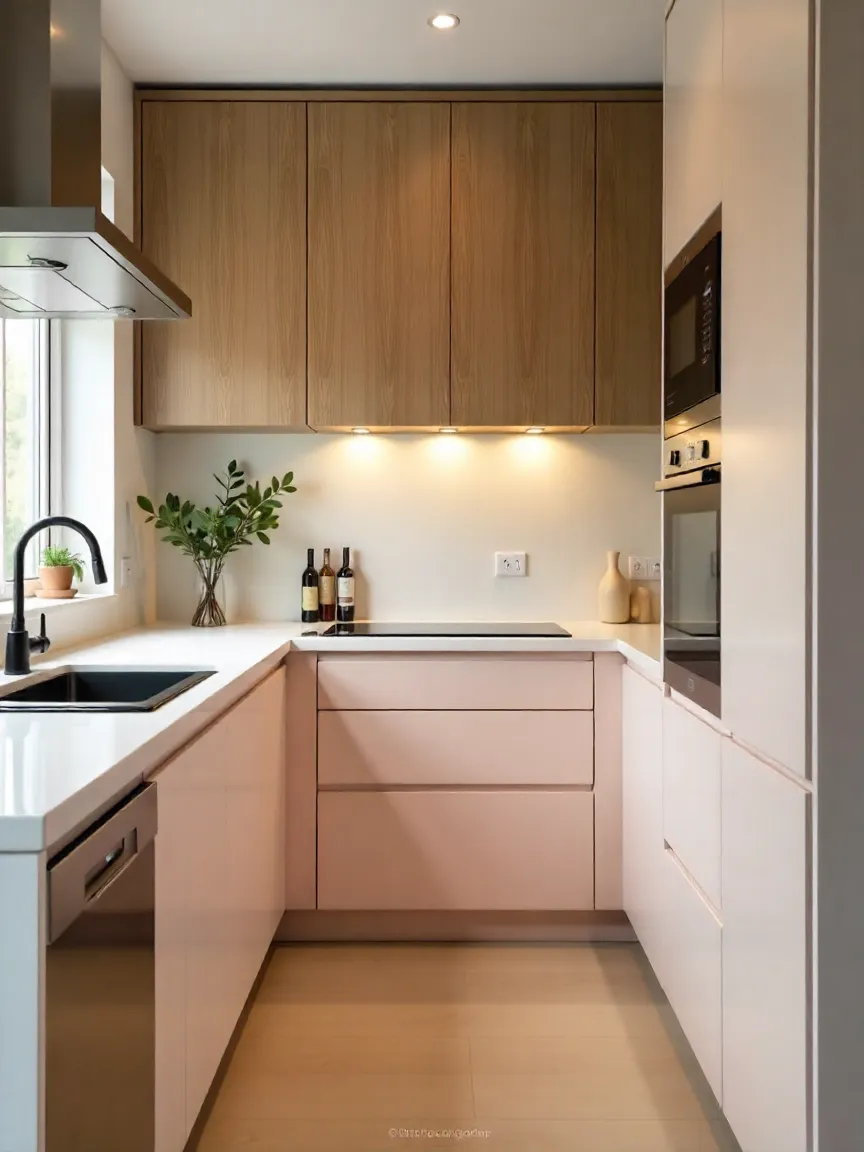

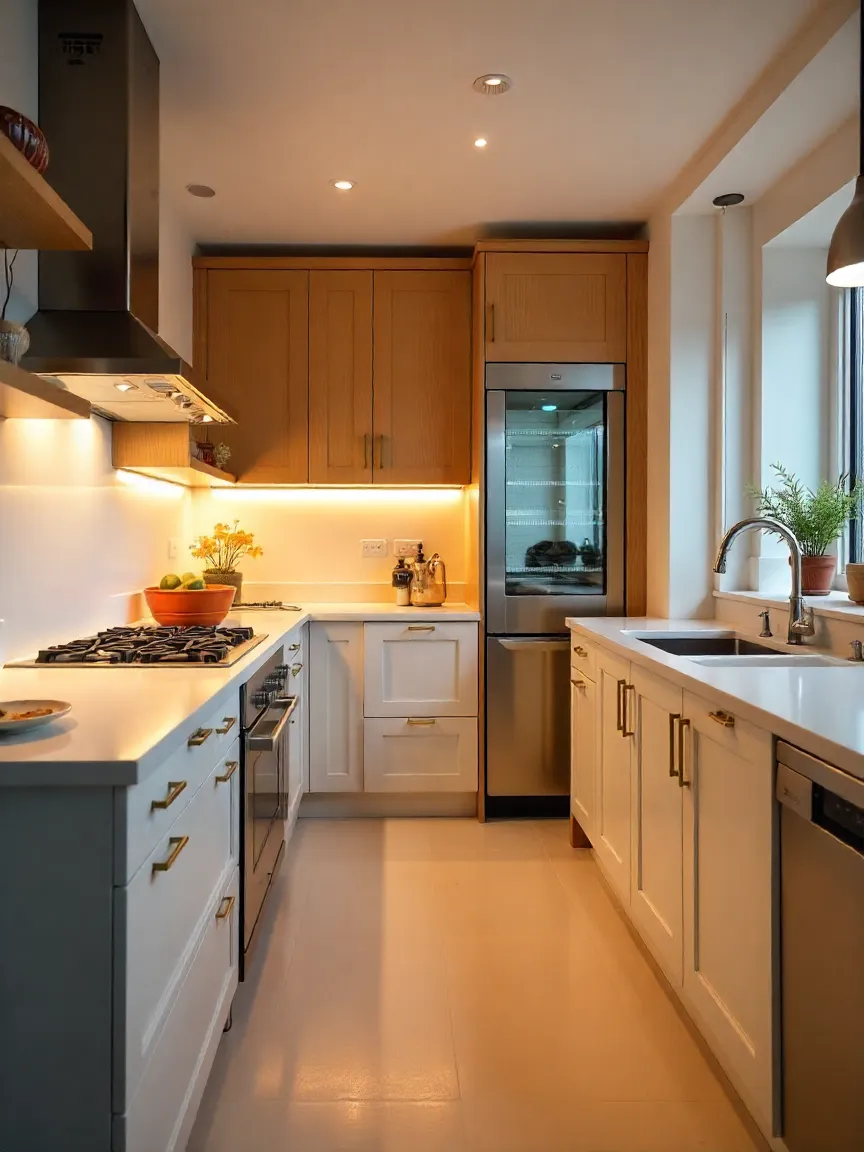
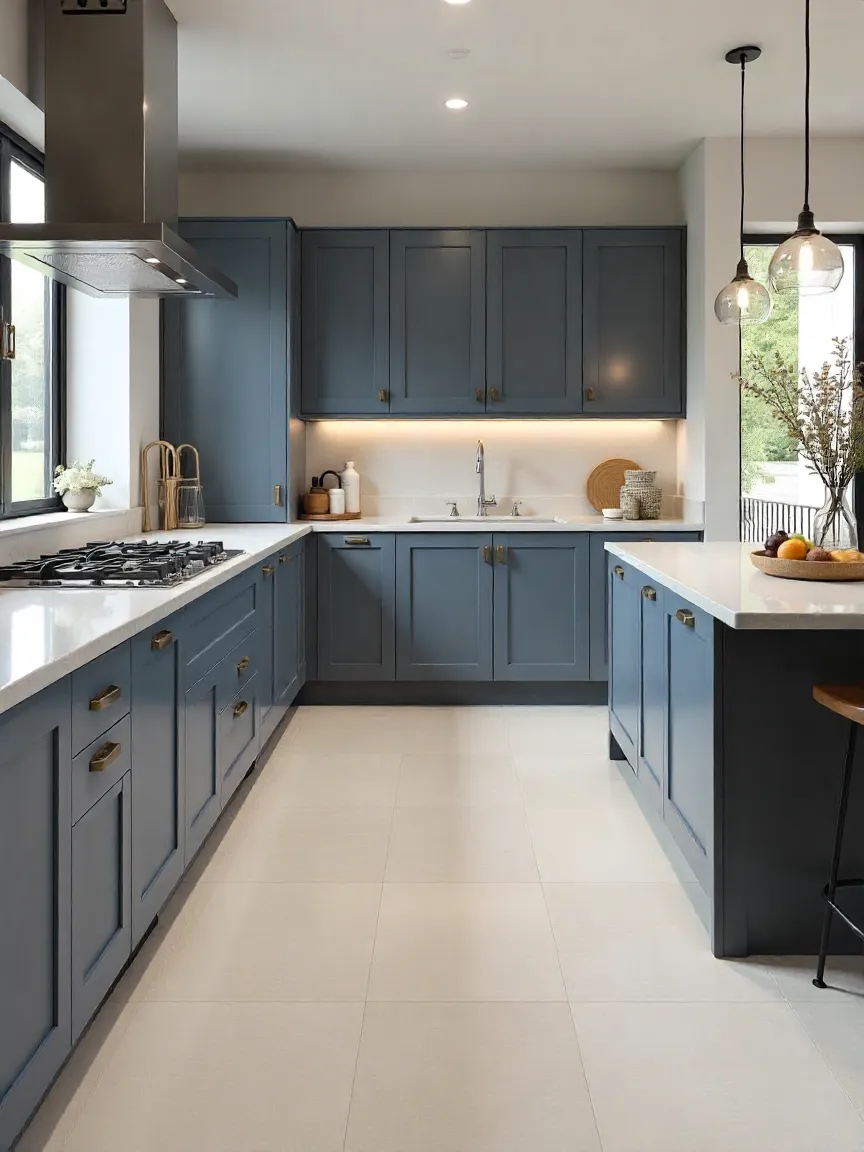
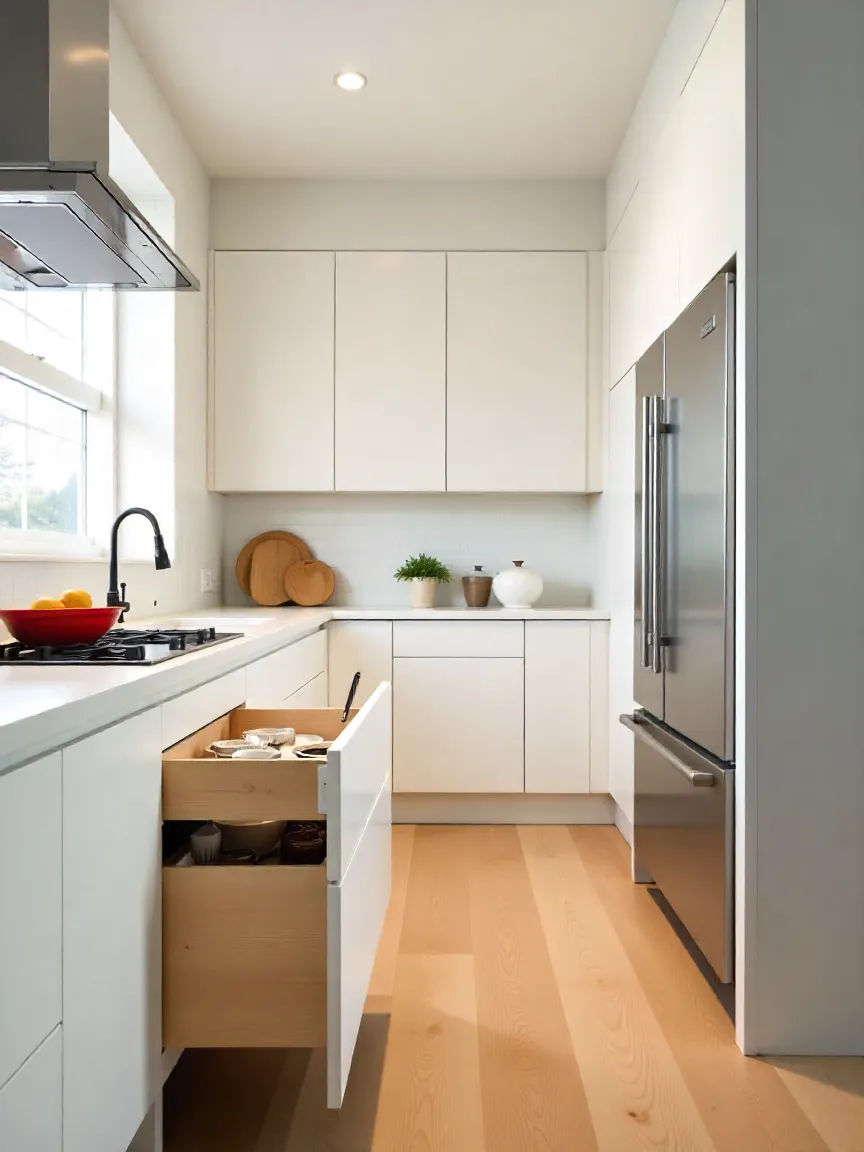
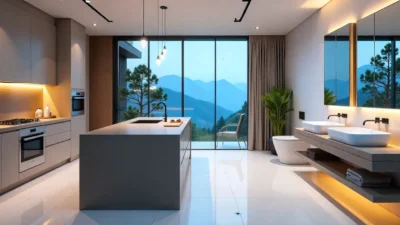
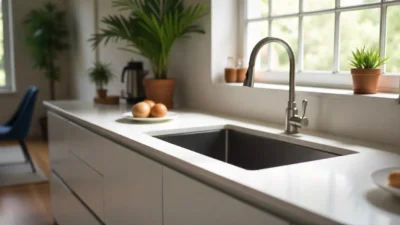
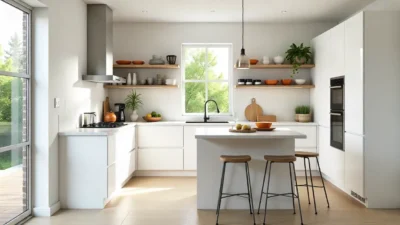
Wow, that’s so true! It’s amazing how much a well-designed kitchen can change the whole feel of a home. I’m totally obsessed with that perfect blend of form and function – you know, something that looks gorgeous but is also super practical and easy to use. When designing my own, I’m really focusing on creating a warm, inviting atmosphere while… keeping those pesky spice jars organized!